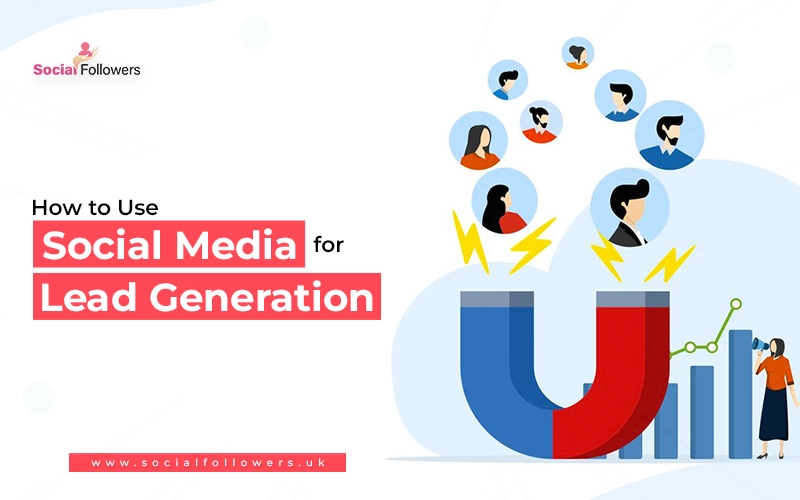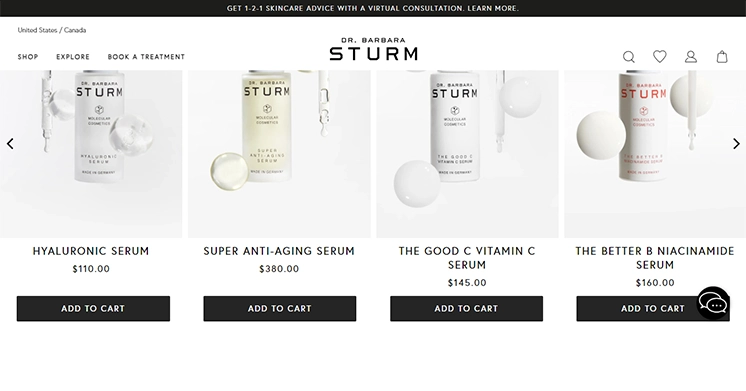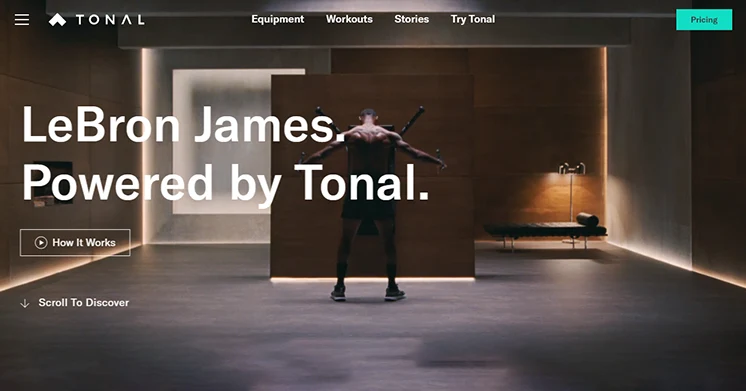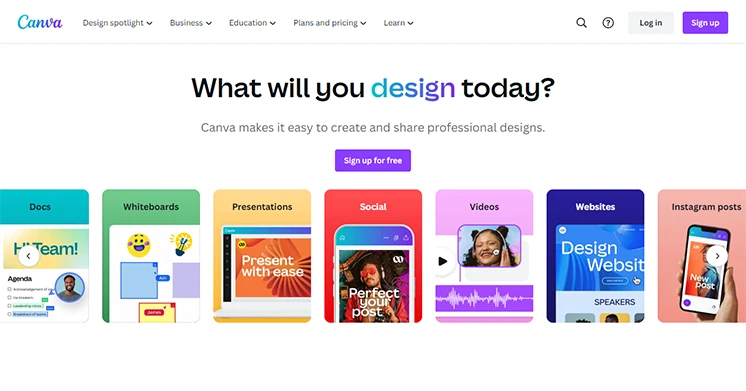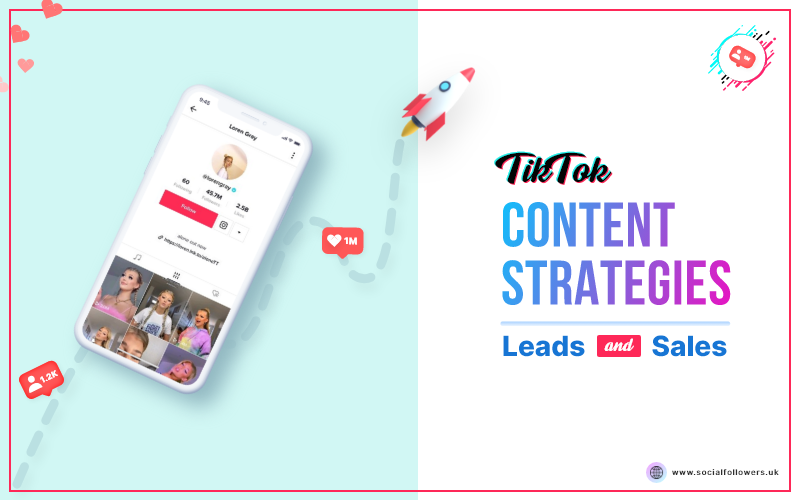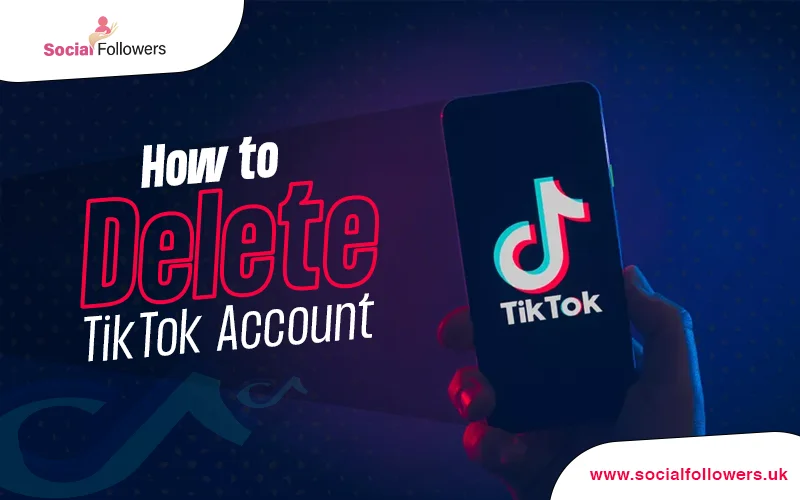77% of small businesses use social media to connect with their customers and increase brand awareness. It is one of the finest media outlets that offers global reach and immense growth potential. Social apps could drive a higher ROI than ever in 2024, for both B2B and B2C businesses as they evolve into frictionless e-commerce platforms.
Do you know that 53% of marketers spend half or more of their budget on lead generation? It is the third most important metric when measuring the effectiveness of content marketing strategies.
Let’s dive deeper to understand what social media lead generation is, develop effective strategies, and determine the ideal platforms for B2B and B2C target marketing to optimize your profiles and drive more sales.
What is Social Media Lead Generation and Why is it Important?
Social media lead generation is the process of leveraging social media platforms to attract, engage, and ultimately convert interested individuals into valuable leads for your business. It’s about turning “likes” and “follows” into real potential customers who are interested in what you offer. The platforms with the highest return on investment are Instagram and Facebook, tied with YouTube, TikTok, LinkedIn, and X.
According to Statista, social media users are projected to increase by almost six billion in 2028. Here are several reasons why lead generation on social media is important:
1. Ubiquitous Reach
With billions of active users across diverse platforms, social media grants you access to a massive potential audience, allowing you to connect with the right people regardless of location or demographics.
2. Targeted Engagement
Unlike traditional advertising, social media allows you to precisely target your ideal customers through specific interests, behaviors, and demographics, ensuring your messages resonate with the most relevant individuals.
3. Cost-Effective Potential
Compared to traditional lead generation methods, social media offers a relatively cost-effective approach, allowing you to interact with and nurture leads organically or through targeted advertising campaigns that fit your budget.
4. Build Relationships
Social media fosters genuine connections and allows you to interact with potential customers in a two-way conversation, building trust and understanding their needs before converting them into leads.
5. Valuable Insights
Social media analytics provide valuable insights into your audience’s preferences and engagement patterns, enabling you to refine your lead generation strategies for maximum impact continually.
Role of Social Media in B2B and B2C Businesses: An Overview
Both business-to-business (B2B) and business-to-consumer (B2C) businesses can greatly benefit from social media, even though their respective strategies are different. It is indeed a powerful asset to connect with your customers, prospects, and partners.
For B2B companies, it’s about building through leadership, nurturing relationships, and generating qualified leads. For 84% of B2B executives and 75% of all B2B buyers, social media is a source for making purchasing decisions. Thoughtful content like industry insights, expert Q&As, and case studies establishes brand authority and attracts potential clients. Targeted advertising and engagement on relevant platforms like LinkedIn help connect with decision-makers.
B2C businesses, on the other hand, leverage social media to increase brand awareness, drive engagement, and ultimately boost sales. Eye-catching visuals, engaging storytelling, and influencer partnerships help capture attention and build brand loyalty. Community building fostered through contests, polls, and interactive content cultivates customer relationships and encourages brand advocacy.
In both cases, social media plays an important role in creating two-way communication with the audience to identify their needs and preferences and bridge the gap in order to learn more deeply about their insights.
How to Choose the Right Social Media Platforms for Lead Generation
Nearly 95% of internet users use social media platforms. Whether you're in the B2B or B2C industry, social media is at its peak and one of the best ways to create leads. Here are some social media lead generation strategies:
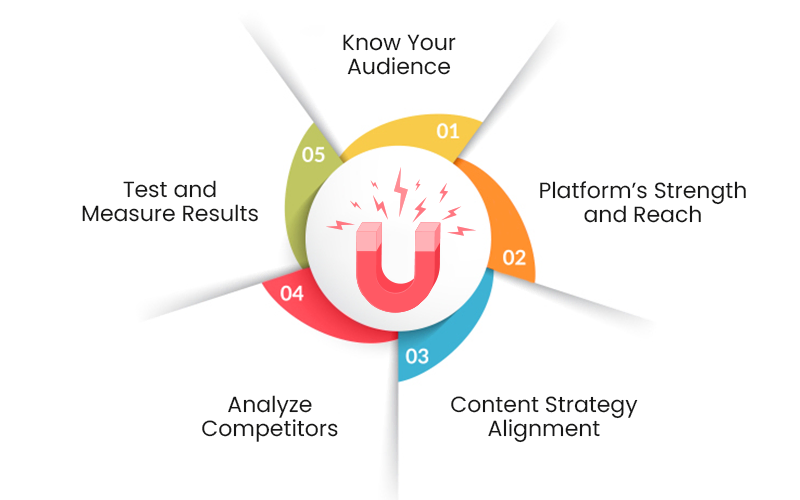
1. Know Your Audience
The foremost step is to understand your ideal customer’s demographics, interests, age, location, and behaviour. Are the young professionals on LinkedIn, visual creators on Instagram, or active trend-chasers on TikTok? Each platform attracts specific demographics, which will help you determine which social media platforms they are most active on.
2. Platform’s Strength and Reach
While LinkedIn excels for B2B connections and Instagram thrives on visuals and influencer marketing, Twitter caters to real-time conversations and breaking news, perfect for brands locating current trends. Additionally, Pinterest is great for showcasing products and driving e-commerce sales. Facebook offers broad reach across demographics and age groups, making it a versatile platform for diverse audiences.
3. Content Strategy Alignment
Each platform supports various types of content, such as text posts, images, carousels, videos, and live streams. Modifying messages and content formats to suit the distinct user preferences and styles of each platform is essential for effective social media marketing. Ensure your content aligns with both your goals and the platform’s strengths. Choose platforms that align with your content strategy and resonate with your target audience.
4. Analyze Competitors
Research your competitors to see which social media platforms they are active on, where they generate leads, and how they engage their audience. Learn from their success and avoid their pitfalls. This can provide valuable insights into which platforms are most effective within your industry, helping you make smart decisions.
5. Test and Measure Results
Experience different social media platforms and track the performance of your lead generation efforts. Use analytical tools to measure key metrics such as engagement, click-through rates, conversion rates, and resources. Assess your team’s capacity and budget to handle several platforms simultaneously. Start with 1-2 platforms and expand as you refine your strategy and see results.
How to Create and Optimize Your Social Media Profiles for Lead Generation
Start by ensuring that your profiles are complete and up-to-date with relevant information about your business, products, and services. Use high-quality images and engaging descriptions to capture the attention of potential leads.
Your social media accounts serve as online product displays where prospective clients can view your products or services, value proposition, and brand identity. You must adhere to each platform’s lead generating checklist in order to create a positive first impression and draw in more leads.
Here is how to generate leads through social media by using different strategies:
Use Keywords, Hashtags, and CTAs
One effective strategy is to utilize keywords strategically throughout your posts and profiles. Incorporating relevant keywords ensures that your content is discoverable to users searching for related topics or products.
Additionally, leveraging hashtags can significantly increase the visibility of your content by categorizing it and exposing it to a broader audience interested in specific trends or subjects.
Moreover, clear and compelling calls-to-action (CTAs) in your posts encourage users to take the desired action, such as visiting your website, in order to attract and convert leads.
Use Images, Videos, and Stories
To showcase your value proposition, visual content is highly engaging and can effectively capture the attention of your audience.
High-quality images and videos in your posts help to showcase your products or services appealingly and engagingly, making them more likely to strike a connection with your viewers.
Similarly, using stories on big platforms like Instagram and Facebook allows you to share behind-the-scenes glimpses of your business and showcase new products or promotions. This will help you get more likes on Instagram and Facebook.
Stories are ephemeral and create a sense of urgency, encouraging users to take swift action to learn more to make a purchase.
Create and Share Valuable Content
Craft content that captures the attention of your target audience’s interests pain points and needs to establish credibility and build trust to lay the foundation for meaningful connections and conversions.
Using various formats, such as blog posts, videos, infographics, and podcasts to cater to different preferences. Leverage content marketing strategies and tools to enhance your efforts, including conducting keyword research, optimizing for SEO, and utilizing content calendars to maintain consistency.
Platforms like Instagram offer features such as Reels, IGTV, Live, and shopping, providing unique opportunities to showcase products and services clearly. And facilitate seamless transactions with shopping features.
Use Social Media Ads and Campaigns
Setting up and managing social media ads and campaigns effectively requires a strategic approach. Start by defining your campaign objective and target audience, then choose the appropriate ad formats and targeted options to reach audience segments.
You can set clear and measurable campaign goals to track success. Additionally, consider A/B testing different ad variations to optimize performance and maximize ROI. Once your ads and campaigns are live, monitor your performance and make data-driven optimizations as needed.
Utilize social media analytics to track key metrics such as impressions, clicks, conversions, and cost per lead to identify your areas of improvement for effectively driving lead generation strategies to increase sales.
Social Media Lead Generation Tools and Automation to Save Time
The market for artificial intelligence in social media is estimated at USD 2.10 billion in 2024 and will increase at a Compound Annual Growth Rate (CAGR) of 28.04% to reach USD 7.25 billion by 2029, during the forecast period (2024- 2029). Here are a few of the most popular tools to effectively work and save precious time:
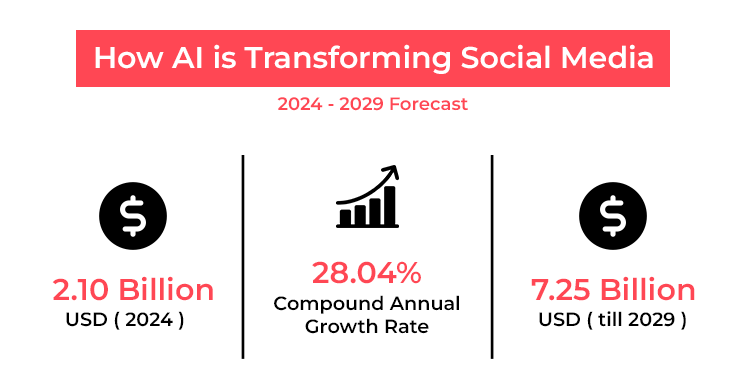
Scheduling and Content Curation
- MeetEdgar: Focuses on automating evergreen content promotion by resharing your best content automatically at optimal times.
- Buffer: Offer scheduling, analytics, and queue management for various social media platforms. They excel at bulk scheduling and content curation.
Analytics and Reporting
- Sprout Social: It offers deep analytics, reporting, and competitor research tools. They excel at providing comprehensive insights and competitor analysis.
- Hubspot Social Media Management: Integrate seamlessly with Hubspot’s CRM platform, offering insights into social media’s impact on your overall marketing funnel.
Chatbot AI For Community Building
- ManyChat: This platform offers user-friendly interfaces for building chatbots that answer FAQs, provide product information, and handle basic customer inquiries 24/7.
- Live Chat Integrations: Tools like Facebook Messenger offer built-in chatbot features to automate responses during specific chat hours or when agents are unavailable. People and businesses around the world exchange over 20 billion messages each month on Facebook Messenger.
Social Media: An Effective Approach for Lead Generation
When we talk about social media, we have many valuable platforms that offer various benefits depending on the target audience and goals of any business. That’s why we are here to distinguish each platform and its usability for lead generation.
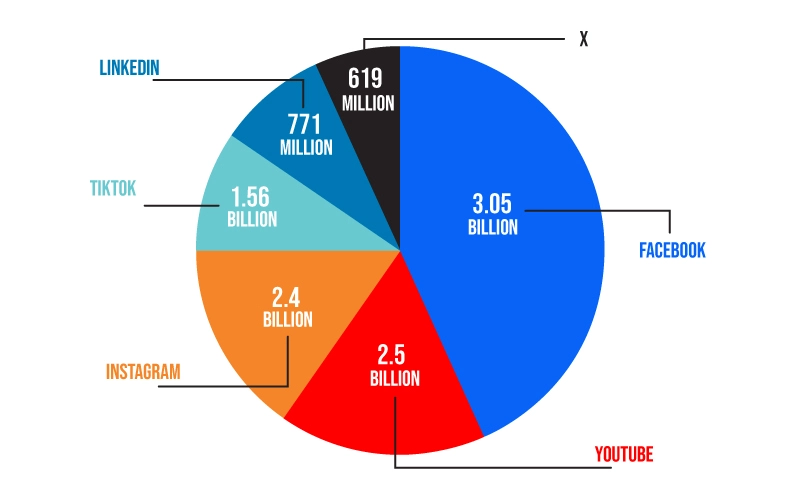
1. Facebook
With more than 3 billion MAU on Facebook, it remains a keystone for lead generation, boasting a vast user base and myriad advertising options. With its robust targeting capabilities and engagement features, businesses can create highly targeted ad campaigns, engage with their audience through posts and Messenger, and leverage groups and events to foster community and drive conversions. Facebook is a useful tool for executing B2B and B2C lead generation strategies because of its extensive ad system and advanced targeting tools, which enable businesses to reach particular demographics.
2. Instagram
As of 2024, Instagram is the world’s 4th most used social platform and offers a visually immersive platform for lead generation. Businesses can sway their visual-centric nature to showcase products and services creatively through posts, stories, IGTV, and Reels. With features like shopping tags and swipe-up links in stories, businesses can seamlessly guide users from discovery to purchase. Instagram’s influencer partnerships and engagement tools further enhance its potential for lead generation, making it an invaluable platform for businesses seeking to connect with a younger, visually oriented audience, making it a valuable asset for B2C businesses.
3. YouTube
It is expected that YouTube’s global users will reach 2.85 billion by 2025. Businesses can use YouTube’s vast reach and search engine capabilities to create informative and engaging videos that showcase their products, services, and expertise. With features like YouTube ads, businesses can target specific demographics and interests, driving traffic to their channel or website. Additionally, YouTube’s analytics tools provide valuable insights into audience behaviour and preferences, allowing businesses to optimise their content for better engagement and conversions.
4. LinkedIn
With its focus on professional connections and industry insights, LinkedIn provides businesses with a unique opportunity to engage with decision-makers and thought leaders in their respective industries. Over 65 million people are using LinkedIn to search for jobs each week. Through targeted advertising and sponsored content, businesses can reach specific job titles, industries, and company sizes, making it an ideal platform for B2B lead generation. It also allows businesses to publish their content, such as articles, whitepapers, and case studies.
5. TikTok
26% of marketers plan to invest more in short videos than any other format in 2024. Through short-form videos and trending content, B2C brands can capture the attention of younger demographics, drive engagement, and connect with consumers through engaging and creative content. With targeted advertising options, effective TikTok content strategies, and influencer partnerships, businesses can reach specific audiences and promote products or services. TikTok’s algorithm also prioritizes engaging content, providing opportunities for brands to expand their reach and attract new leads organically.
6. Twitter (X)
Twitter has reached 12.6% of internet users worldwide, with over 500 million monthly active users. For B2C businesses, it offers opportunities to engage with consumers, build brand awareness, and drive product sales through targeted advertising campaigns and compelling content. On the other hand, Twitter also provides valuable opportunities for B2B marketing, allowing businesses to establish thought leadership, connect with industry influencers, and generate leads. It's advertising options, such as promoted tweets and sponsored content, enable B2B businesses to reach decision-makers and professionals in targeted industries.
Case Studies of Lead Generation Using Social Media
The case studies below demonstrate the results of effective B2B and B2C social media lead generation campaigns across various social media channels.
1. Dr. Barbara Sturm
Challenge: Dr. Barbara Sturm, a skincare brand founded by a German aesthetic doctor, wanted to connect with Gen-Z consumers and increase brand awareness and sales in the US market.
Solution: The brand partnered with TikTok creators who had a strong following among Gen-Z and millennial audiences, such as Addison Rae and Charli D'Amelio. The creators posted videos featuring Dr. Barbara Sturm products and shared their skincare routines and tips.
The brand also launched a hashtag challenge, #SturmGlow, inviting users to show off their glowing skin using Dr. Barbara Sturm products.
Results:
- The campaign generated over 1.7 billion views and 2.3 million engagements on TikTok.
- The brand saw a 150% increase in website traffic and a 35% increase in online sales in the US.
- The brand gained over 100,000 new followers on Instagram and TikTok.
2. Tonal
Challenge: Tonal, a smart home gym that uses digital weights and personalized coaching, wanted to build an engaged community and generate leads for its high-end product.
Solution: The brand leveraged Facebook Groups to create a space for its customers and prospects to interact, share their fitness journeys, and get support from each other and the brand. The brand also used Facebook Ads to drive traffic to its website and landing pages, where users could sign up for a free trial or request a demo.
Results:
- The brand's Facebook Group grew to over 20,000 members, with an average of 1,000 posts, comments, and reactions per day.
- The brand's Facebook Ads achieved a 10x return on ad spend and a 30% lower cost per lead than other channels.
- The brand increased its sales by 800% year-over-year.
3. Canva
Challenge: Canva needed to reach new audiences and generate leads for its graphic design platform, as it is both a B2B and B2C platform that wanted to increase its turnover.
Solution: Partnered with TikTok as a “Marketing Partner” and launched the “Canva Design Challenge, “encouraging users to create and share designs inspired by a specific theme.
Results:
- Over 100,000 users participated, which increased significant audience reach and engagement.
- 10,000 designs were created that demonstrated user excitement and potential for design creation.
- Canva has introduced itself to new users and gained new leads, while TikTok provided users with creative tools and content inspiration.
Final Thoughts
The CMO Agenda Report from Aberdeen Group states that when sales and marketing are properly aligned, revenue can increase by 32%. Keep in mind that, as each platform presents a different set of opportunities, the ideal place to generate leads from social media is the one where your target audience is most active. Social media marketing can be used by both B2B and B2C marketers to create leads and expand their brand’s growth.
Author’s Bio:
Hafsa Shahzad
SEO Content Writer-Blogger
Hafsa has been working as a writer and blogger for over 3 years now. She's got a knack for writing engaging content that hits the sweet spot, especially in Digital Marketing, Big Tech Industry, and AI. When she's not glued to her writing desk, you might find her sketching beautiful portraits or preparing her favourite coffee in the kitchen.
